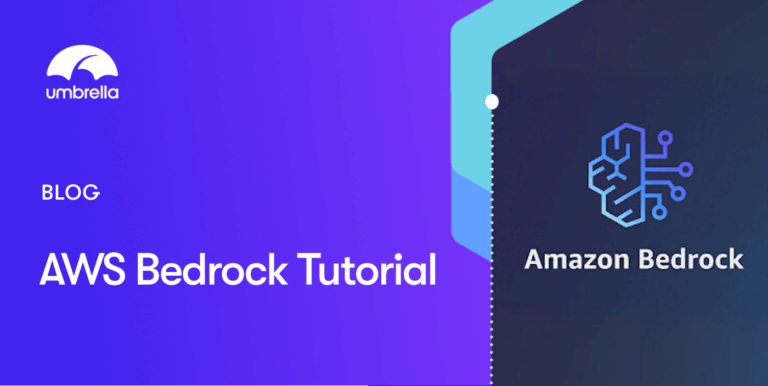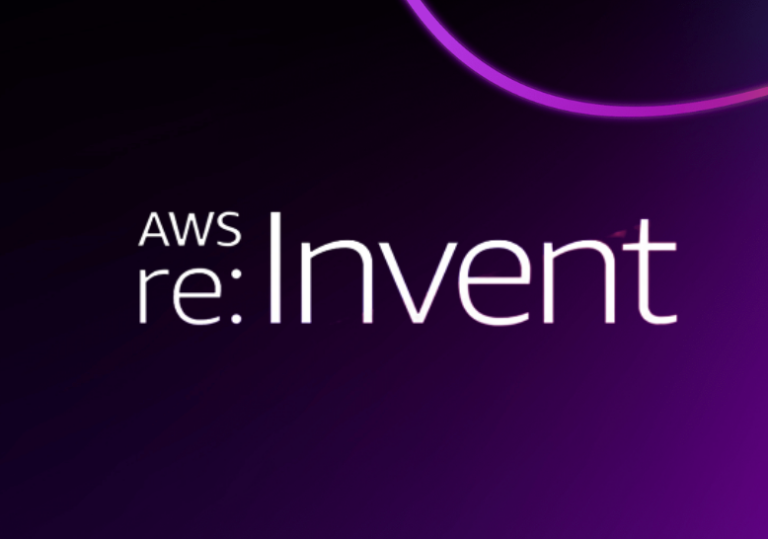Blog Post
10 min read
AWS re:Invent Guide to Cloud Cost Savings Sessions
AWS re:Invent, one of the biggest tech events in the world, is just weeks away. While there are thousands of sessions to choose from, there's bound to be high interest in sessions focused on cloud cost optimization and management. That's because maximizing cloud efficiency and reducing waste is ranking as a top priority, and a challenge for organizations of all sizes.
If cloud cost savings is important for your business, we've compiled a list of the best sessions to attend. You can find the sessions listed below by visiting the AWS re:Invent Session Catalog where there is an option to search by keyword and register.
Umbrella is leading one of the sessions — focusing on the power of insight to accelerate AWS — and will be exhibiting at booth #2540 where you can get one-on-one time with one of our cloud experts to learn how to optimize your AWS cloud spend. Book a meeting here to secure your spot!
Monday, November 28
Spot the savings: Use Amazon EC2 Spot to optimize cloud deployments
CMP324-R | Time: 1:00 - 3:00 PM | Session Type: Workshop
Amazon EC2 Spot Instances are spare compute capacity available to you for less than On-Demand prices. EC2 Spot enables you to optimize your costs and scale your application’s throughput. This workshop walks you through the APIs and commands used to create Spot Instances: You create an EC2 launch template and then use the launch template to launch Spot Instances using EC2 Auto Scaling groups, EC2 Spot Fleet, EC2 Fleet, and EC2 RunInstances API. Also learn how to implement Spot functions such as Spot placement score, attribute-based instance selection, and AWS Fault Injection Simulator.
Cloud metrics strategy and customizable billing
COP202-R | Time: 2:30 PM - 3:30 PM | Session Type: Chalk Talk
A well-defined cloud metrics strategy helps organizations evaluate the efficiency of cloud resource utilization and tell a cloud value story that is aligned with business outcomes. The ability to customize pricing and billing views allows you to charge back to your end users in a streamlined process. Join this session to learn how you can construct KPI strategies and accountability with services such as AWS Billing Conductor and start running your IT department like a business.
Visualizing AWS Config and Amazon CloudWatch usage and costs
COP215-R | Time: 2:30 PM - 3:30 PM | Session Type: Chalk Talk
In this session, explore dashboards that you can deploy into your own account to get a real-time view of some of the typical main contributors to AWS Config and Amazon CloudWatch costs. The dashboards are designed to help you identify high-cost areas and see the impact of any changes made over time. You can deploy the dashboards into your own account and explore how to create and modify them for your own needs.
How to save costs and optimize Microsoft workloads on AWS
ENT205 | Time: 4:00 - 5:00 PM | Session Type: Breakout Session
Customers have been running Microsoft workloads on AWS for 14 years—longer than any other cloud provider—giving AWS unmatched experience to help you migrate, optimize, and modernize your Windows Server and SQL Server workloads. In this session, learn best practices and see demos on how to right-size your infrastructure and save on Microsoft licensing costs; how to configure your workloads to run more efficiently; how to avoid expensive and punitive licensing restrictions; and how AWS offers you the most and highest performing options for your Microsoft workloads.
How SingleStore saves 56 percent on Amazon EC2 with no DevOps hours invested
PRT095 | Time: 5:10 - 5:25 | Session Type: Lightning Talk
For SingleStore, the cost of data is high. To manage the cost of running their SQL distributed database, SingleStore aimed to drive cost efficiency as far as they could. SLA requirements for data continuity prevented them from utilizing highly discounted Amazon EC2 Spot Instances. But the long-term commitments associated with other discount programs made them too risky to cover fluctuating workloads. In this lightning talk Ken Dickinson, VP of Cloud Infrastructure at SingleStore, explains how SingleStore was able to ramp up their Amazon EC2 savings even further. Learn how they covered 99 percent of their workloads to help them break through their previous savings ceiling. This presentation is brought to you by Zesty, an AWS Partner.
Tuesday, November 29
Continuous cost and sustainability optimization
SUP304 | Time: 11:45 - 1:45 | Session Type: Workshop
In this workshop, learn best practices for cost and sustainability optimization. Shift costs and sustainability responsibilities from the Cloud Center of Excellence (CCoE) to end users and application owners aided by automation at scale. Learn about cost efficiency and implementing mechanisms that empower application owners to have clear, actionable tasks for cost and sustainability optimization building upon real-world use cases. You must bring your laptop to participate.
How to use Amazon S3 Storage Lens to gain insights and optimize costs
STG335 | Time: 2:00 PM - 3:00 PM | Session Type: Builder's Session
As your dataset grows on Amazon S3, it becomes increasingly valuable to use tools and automation to manage and analyze your data and optimize storage costs. In this builders’ session, learn about Amazon S3 Storage Lens which delivers a single view of object storage usage and activity across your entire Amazon S3 storage. It includes drill-down options to generate insights at the organization, account, Region, bucket, or even prefix level. Walk through S3 Storage Lens, and learn how to get started with this feature with your own storage. You must bring your laptop to participate.
Multi- and hybrid-cloud cost optimization with Flexera One
Time: 2:40 PM - 2:55 PM | Session Type: Lightning Talk
In this talk, Flexera discusses and demonstrates the Cloud Cost Optimization (CCO) functionality of the Flexera One platform. See how CCO allows you to achieve a true single-pane-of-glass view for all multi-cloud resources, including global regions of major cloud providers and emerging and niche cloud offerings. Using CCO’s Common Bill Ingestion functionality, any additional cloud resource costs (support costs, labor costs, VAT, etc.) can be ingested into the platform and viewed and analyzed alongside existing cloud resources. All phases of the FinOps framework are activated within CCO and will be included in this demonstration. This presentation is brought to you by Flexera, an AWS Partner.
AWS optimization: Actionable steps for immediate results
STP210-R1 | Time: 3:30 PM - 4:30 PM | Session Type: Theatre Session
Cash burn is a hot topic for startups, and late-stage funded ventures especially need to keep tabs on budget as they ramp up. AWS offers resources to make cost management, budget tracking, and optimization simple and attainable for startups of any size. In this session, get familiar with the different technical strategies, levers to pull, and commitment-based savings plans AWS offers. After this session, you will have an actionable plan with a combination of tactical and strategic initiatives that can help you reduce overall spend and increase your runway.
Scaling performance and lowering cost with the right choice of compute
CMP318-R | Time: 3:30 PM - 4:30 PM | Session Type: Chalk Talk
This chalk talk covers the latest innovations across Intel, AMD, and AWS Graviton compute options (i.e., Intel Ice Lake, AMD Milan, and AWS Graviton3) to help companies choose the optimal instance for their workloads. Learn about the price performance benefits enabled by AWS compute options and the AWS Nitro System across a broad spectrum of workloads.
Simplify your AWS cost estimation
Time: 3:30 PM - 4:30 PM | Session Type: Breakout Session
Take the guesswork out of planning with AWS: accurately evaluate the cost impact of your AWS workloads as you grow and save on AWS. Join this chalk talk to learn how you can plan for changes to your workload and simplify your cost estimate. Understand how modifications of your purchase commitments, resource usage, and commercial terms affect your future AWS spend.
Optimize for cost and availability with capacity management
CMP319 | Time: 5:00 PM - 6:00 PM | Session Type: Chalk Talk
Managing your capacity footprint at the enterprise level can be complex. This chalk talk covers how to plan for, acquire, monitor, and optimize your capacity footprint to achieve your goals of maximizing for capacity availability while minimizing costs. Leave this talk with an understanding of how to use Amazon EC2 Capacity Reservations, On-Demand Capacity Reservations, and Savings Plans to lower costs so that you can focus on innovating.
Visualize, understand, and manage your AWS costs
COP336-R1 | Time: 5:00 - 6:00 | Session Type: Builder's Session
Having actionable cost insights with the right level of cost reporting allows you to scale on AWS with confidence. Join this hands-on builders session to learn which resources are available for you to achieve cost transparency, dive deep into cost and usage data, and uncover best practices and dashboards to simplify your cost reporting. Explore AWS Cost Explorer and AWS Cost and Usage Reports (CUR) and then learn how to export and query CUR and visualize resource-level data such as AWS Lambda functions and Amazon S3 bucket costs using the CUDOS dashboard.
Wednesday, November 30
Cloud FinOps: Empower real-time decision making
PRT322 | Time: 10:00 AM - 11:00 AM | Session Type: Breakout Session
As organizations align their processes to the realities of operating in the cloud, they seek to understand what they are spending and, more specifically, how they can analyze their infrastructure in their business context. FinOps practitioners can implement a dedicated solution to analyze data, manage anomalies, and measure unit costs. Join this session to learn how CloudHealth, a recognized leader in FinOps and cloud cost management, gives users the information they need to meet their organizational goals and objectives. This presentation is brought to you by VMware, an AWS Partner.
FinOps: The powerful ability of insight to accelerate AWS (sponsored by Umbrella)
PRT035 | Time: 10:55 - 11:10 AM | Session Type: Lightning Talk
Attend this talk to learn how you can empower your business stakeholders with clarity and highly personalized insights to unlock all the cloud has to offer. Learn tactics and best practices for developing your AWS cost management strategy by minimizing noise and maximizing the relevance between your FinOps practice and your unique business objectives. This presentation is brought to you by Umbrella, an AWS Partner.
Thursday, December 1
FinOps: Intersecting cost, performance, and software license optimization (sponsored by Flexera)
PRT306 |Time: 11:00 AM - 1:00 PM | Session Type: Workshop
Within the rapidly maturing FinOps discipline, cost is the driving force behind the optimization of cloud resources. Actions taken to optimize costs may be detrimental to application performance or be at odds with licensing restrictions for the software running on those resources. In this workshop, experts from Flexera and IBM Turbonomic identify overlooked aspects of cloud cost optimization and demonstrate how successful FinOps practices require visibility and continuous analysis of performance metrics and licensing constraints when optimizing cloud resources. You must bring your laptop to participate. This presentation is brought to you by Flexera, an AWS Partner.
Building a budget-conscious culture at Standard Chartered Bank
CMP213 | Time: 2:00 PM - 3:00 PM | Session Type: Breakout Session
In this session, Standard Chartered Bank shares how FinOps has been embedded in the way they build systems. Critical large systems at Standard Chartered Bank—such as scaling applications, container platforms, and their grid for calculating risk and analytics—use techniques to reduce waste and optimize cost and performance at scale. These techniques include using an optimal combination of AWS Savings Plans and Amazon EC2 Spot Instances, building for elasticity, and applying automation to switch down systems not in use.
Read more









